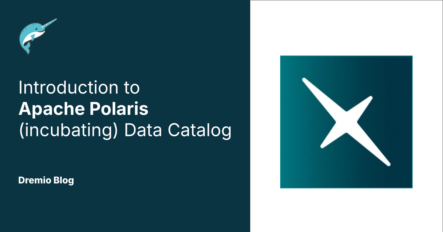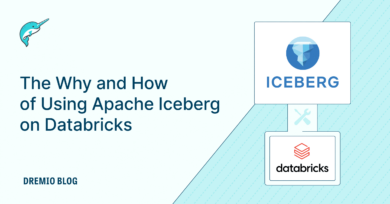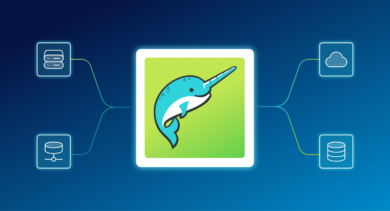6 minute read · October 17, 2024
Introduction to Apache Polaris (incubating) Data Catalog
· Senior Tech Evangelist, Dremio

The Apache Polaris (incubating) lakehouse catalog is the next step in the world of open lakehouses built on top of open community-run standards. While many other lakehouse catalogs are vendor-controlled or don’t enable full read-and-write support for Iceberg lakehouses, Polaris takes it a step further by being a community-run project integrating seamlessly with Apache Iceberg to enhance metadata management, cataloging, and governance.
Overview of Polaris Catalog
Polaris is a centralized solution for cataloging Iceberg tables. It provides an organized structure that helps enterprises manage large datasets across cloud environments like AWS S3, Google Cloud Storage, and Azure. Polaris supports multiple storage types, allowing flexibility in how data is stored and accessed.
Importance of Data Cataloging and Metadata Management
Effective metadata management is critical for any data platform. Lakehouse catalogs act as directories, enabling tools like Dremio, Snowflake and others to discover where table metadata is located. Polaris not only acts as a directory but also as a gatekeeper to who can see which entries in that directory have security access to your lakehouse tables.
What is Polaris Data Catalog?
The Polaris Data Catalog is more than just a tool for organizing data—it is a comprehensive metadata management platform that enables enterprises to utilize their Iceberg tables fully. By managing metadata pointers and enabling atomic operations, Polaris ensures that all datasets are up-to-date, governed and reliable.
Defining Polaris Catalog
At its core, Polaris provides a way to manage Apache Iceberg tables within a catalog. It enables secure and efficient storage, organization, and access to datasets, improving collaboration and scalability. Polaris also allows organizations to create internal and external catalogs, depending on whether they use third-party catalogs like Nessie, Gravitino and Unity.
Core Features of Polaris Catalog
The Polaris Catalog offers several key features designed to streamline data management and improve overall efficiency:
- Centralized Metadata Management: Polaris allows users to manage all metadata for Apache Iceberg tables in one place. This centralization makes it easier to track and query data, ensuring consistency and reliability.
- REST API Support: Polaris provides Iceberg REST Catalog support, allowing integration with various query engines like Apache Spark, Dremio, Snowflake and Flink. This flexibility means you can use your preferred tool to interact with Iceberg tables while maintaining strong data governance.
- Scalability: Polaris supports large-scale data environments by managing both internal and external catalogs. This is especially useful when working with multiple cloud environments or hybrid data platforms (for example, connecting a self-managed Nessie catalog you may use for on-prem assets).
- Role-Based Access Control (RBAC): Polaris ensures that data access is tightly controlled through its RBAC model, allowing organizations to define roles and permissions for various entities, including catalogs, namespaces, and tables.
Benefits of Using Polaris Catalog
The Polaris Data Catalog delivers several key benefits that make it a powerful tool for data cataloging and metadata management:
Improved Metadata Management
With Polaris, you gain full control over the metadata of your Iceberg tables. It tracks and updates metadata pointers for your datasets, ensuring that all data operations are conducted on the latest version of the data. This minimizes the risk of errors or outdated data being used in analytical workflows.
Enhanced Data Discovery and Governance
Polaris enhances data discovery by making metadata more accessible, allowing data teams to quickly locate and understand the structure of datasets. Its role-based access controls also ensure that governance policies are enforced, keeping data secure and compliant with organizational standards.
Conclusion
Incorporating the Polaris Data Catalog into your Data Lakehouse architecture offers a powerful way to enhance data management, improve performance, and streamline data governance. The combination of Polaris's robust metadata management and Iceberg's scalable, efficient table format makes it an ideal solution for organizations looking to optimize their data lakehouse environments.
Recap of Key Benefits
- Enhanced metadata management: Polaris ensures that metadata is always up-to-date and accessible, reducing errors and improving data quality.
- Improved data discovery: With centralized metadata management, organizations can easily locate and understand their datasets, leading to more efficient operations.
- Unified data governance: Role-based access controls ensure that only authorized users can access specific datasets, improving compliance and security across the organization.
Resources to Learn More about Polaris and the Lakehouse
Sign up for AI Ready Data content


